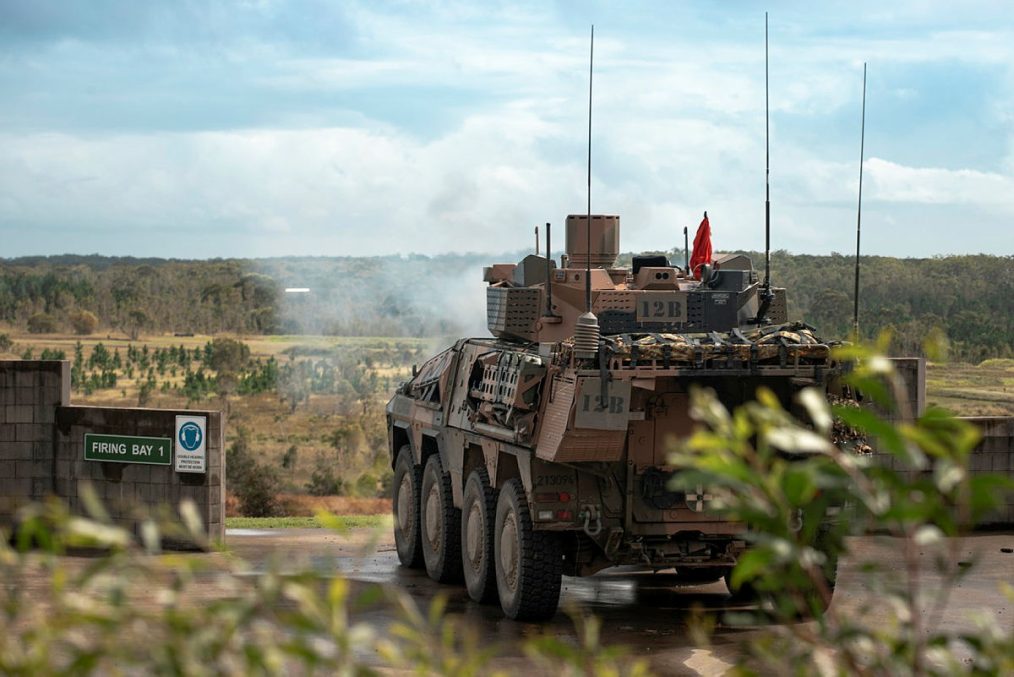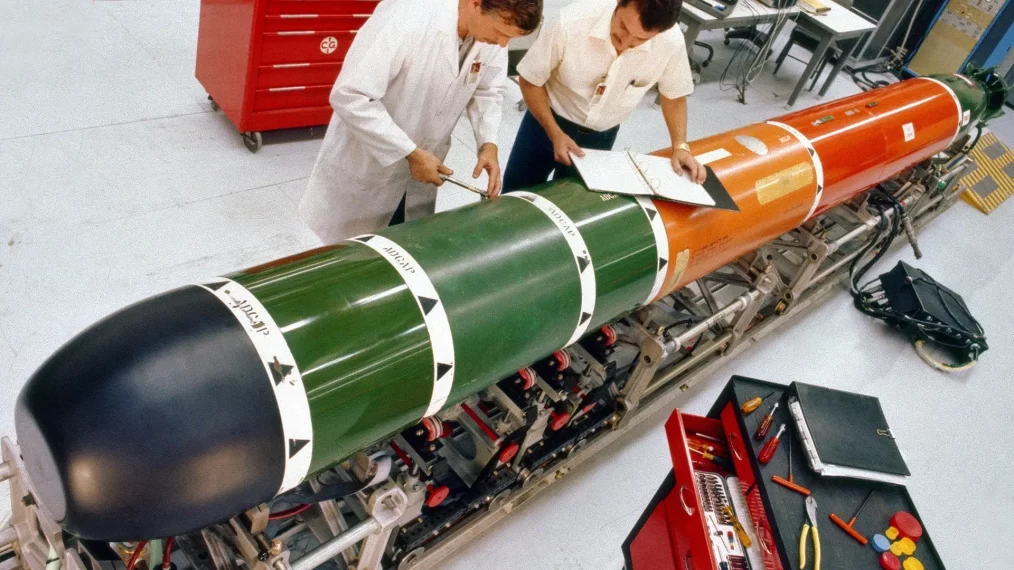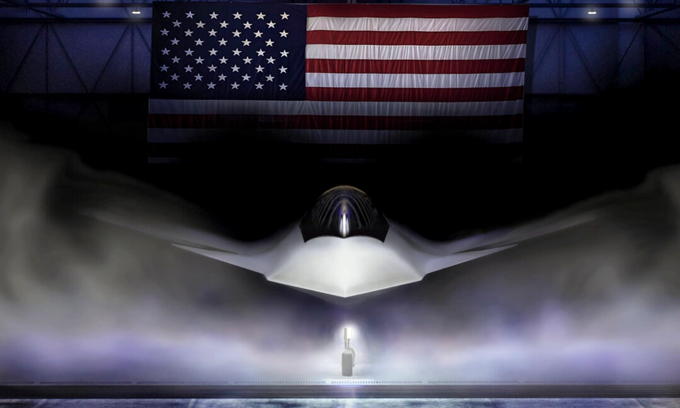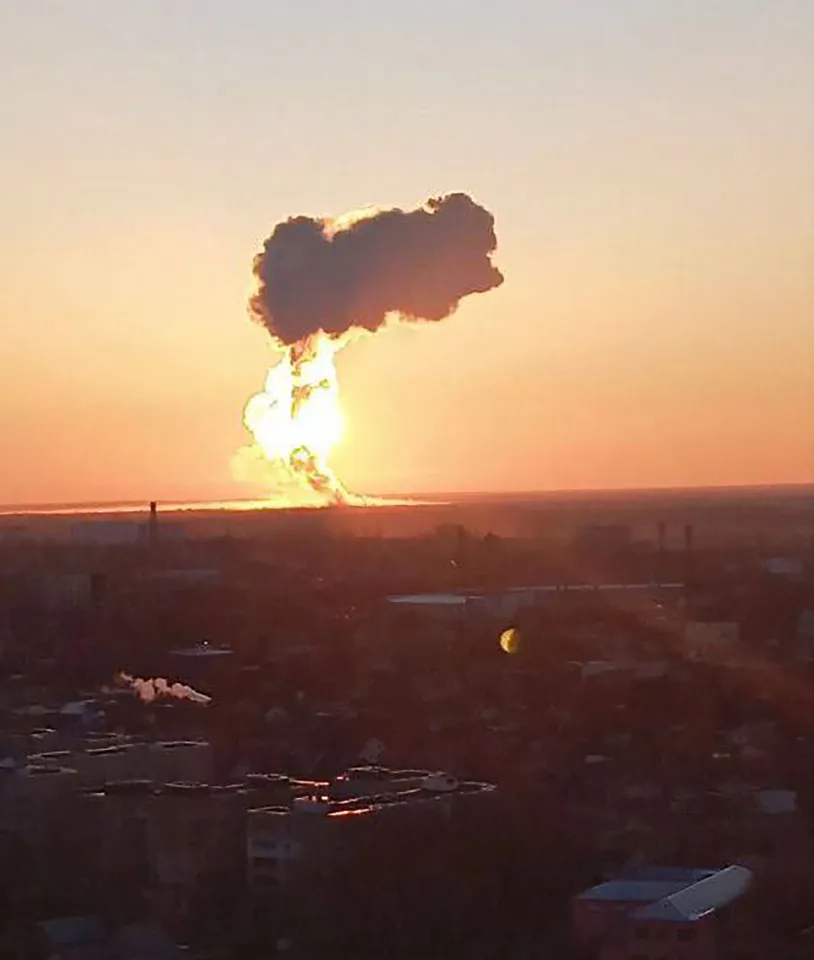 As the first video of our real-life heroes mini-series we explore the incredible inspirational life and military career of Rayene Stewart Simpson, one of Australia’s finest soldiers. Simpson served in WW2, Korea, Malaya and in Vietnam and was awarded a Victoria Cross, Silver Star, Bronze Star and Distinguished Conduct Medal.
As the first video of our real-life heroes mini-series we explore the incredible inspirational life and military career of Rayene Stewart Simpson, one of Australia’s finest soldiers. Simpson served in WW2, Korea, Malaya and in Vietnam and was awarded a Victoria Cross, Silver Star, Bronze Star and Distinguished Conduct Medal.
The Australian Army is advancing its amphibious capabilities with the Boxer Combat Reconnaissance Vehicle (CRV). On 18 March 2025, crews from the 2nd/14th Light Horse Regiment tested its deployment at the Port of Brisbane, working with HMAS Choules in a naval exercise.
As part of the $15.7 billion Land 400 Phase II program, the Boxer CRV features an 8×8 modular design, a 720-hp engine, and advanced firepower, including a 30mm chain gun and Spike-LR2 missiles. From beach landings in 2020’s Sea Wader to naval deployments in 2025, it is preparing for Indo-Pacific operations.
With 211 vehicles in production and local manufacturing in Queensland, the Boxer CRV strengthens Australia’s defence ties with AUKUS and NATO. How does it compare to Indonesia’s Pandur II or Singapore’s Terrex ICV? Australia’s investment in amphibious readiness is shaping its military future.
The fragile ceasefire between Israel and Hamas shattered on Tuesday, bringing an end to two months of relative calm. The Israeli military resumed its bombardment of Gaza, citing Hamas’s continued refusal to release hostages. In response, Hamas launched rocket attacks into Israel, though no casualties have been reported on the Israeli side. Since the fighting reignited, it is alleged by Hamas that over 400 people have been killed in Gaza.
Of the more than 250 hostages originally seized by Hamas during the October 7th, 2023, attacks, 59 remain captive. Reports indicate that 24 of them are believed to be alive. The failure of negotiations to secure their release has only escalated tensions, prompting Israel to take further action.
Israeli Defence Minister Israel Katz has signalled an expansion of Israel’s control in Gaza. He has instructed the military to seize additional territory and facilitate evacuations, emphasizing that Hamas will continue to lose ground unless it agrees to release the remaining hostages. Katz also referenced plans to implement former U.S. President Donald Trump’s “voluntary transfer plan” for Gaza residents, hinting at broader strategic objectives in the region.
Egypt, a key mediator in previous ceasefire talks, has condemned Israel’s renewed offensive. Egyptian officials have described the resumption of hostilities as a “blatant violation” of the ceasefire agreement and warned of potential “ripple effects” from the escalating violence. While Cairo has historically played a central role in de-escalation efforts, its ability to rein in the conflict remains uncertain.
The ongoing war continues to polarize global opinion. Critics of Hamas argue that the group’s manipulation of casualty figures and propaganda efforts have fuelled Western sympathy, ultimately prolonging the war. They point to statements from the now-eliminated Hamas leader Yahya Sinwar, who had instructed militants to leverage media narratives to their advantage. Supporters of Hamas, however, claim that the group’s actions are part of a broader struggle against what they perceive as Zionist oppression. While many recognize the war as having been initiated by Hamas’s brutal October 7 attack, others frame it as a continuation of decades-long hostilities in the region.
As Israel advances its operations, the humanitarian situation in Gaza remains dire. With no resolution in sight, the conflict appears poised to enter an even more intense and unpredictable phase.
Media Release – 24/3
Australia has entered into a $200 million agreement with the United States to acquire additional quantities of advanced torpedoes. Designed for both anti-submarine and anti-surface warfare, the enhanced stockpile of MK-48 Heavy Weight Torpedoes will significantly bolster the defensive and offensive capabilities of Australia’s Collins class submarines. The MK-48 will also be integrated into the country’s future nuclear-powered submarines.
This acquisition is part of a collaborative program between the Australian and United States governments, involving the joint development of MK-48 hardware and software. This initiative not only facilitates the acquisition and sustainment of the capability for both the Royal Australian Navy and United States Navy but also reinforces the deep strategic ties between the two nations.
Australian MK-48 Heavy Weight Torpedoes are procured in sections, which are then assembled and tested at the Torpedo Maintenance Facility in Western Australia. This facility is certified to assemble, maintain, and test the weapon for use in United States Navy platforms as well. The procurement effort enhances Australia’s deterrence capabilities and aligns with the objectives outlined in the 2024 National Defence Strategy.
By expanding the nation’s torpedo stockpile, the government aims to ensure that the Royal Australian Navy remains equipped with the latest technology to counter emerging threats. The continuous joint development of the MK-48 Heavy Weight Torpedo underscores Australia’s commitment to maintaining a strong and capable defence force while reinforcing its alliance with the United States.
ED: This is a lengthy read, but I believe you’ll find it very interesting—especially if you suspect we’re being misled about climate change and its natural causes.
Spectator Australia – Ian Plimer 22 March 2025 9:00 am
Someone has to do reading of the latest science for Speccie readers. This task has fallen to me, on the condition that when I meet readers they buy me fluids manufactured by releasing carbon dioxide to the atmosphere from fermentation.
Each year the UK’s Global Warming Policy Foundation publishes a scientific report on the state of the climate. For those with a short attention span wanting to move on to the next article, before you leave you need to sit down, take a deep breath, have a drink at hand and read the final conclusion for the 88-page 2024 report by Professor Ole Humlum: ‘Observations confirm the normal overall variability of average meteorological and oceanographic conditions, and do not support the notion of an ongoing climate crisis.’ Throw that drink down, pour another and celebrate that there is no climate crisis, climate catastrophe or, in fact, anything to worry about at all. We have been conned for decades but I’m not telling you something you didn’t already know.
Land air temperatures in 2024 were the highest on record for the instrumental era (since 1979). However, proxies show that it was warmer in the Minoan, Roman and medieval warmings and in the previous interglacial. Over geological time, it has been warmer and wetter with higher sea levels than at present. Kilometre-thick ice sheets were at sea level at the Equator when atmospheric carbon dioxide was hundreds of times the current level. The past does not change just because it is not in accord with ideology.
Since 1979, lower troposphere temperatures have increased over both land and oceans but mostly over land. This could be due to solar insolation as well as changes in heat capacity, variations in incoming solar radiation, cloud cover, urbanisation and land use.
The so-called global warming experienced since 1980 was a Northern Hemisphere phenomenon with two step changes 1994-1999 and 2015-2016 influenced respectively by the Mount Pinatubo eruption and an El Niño episode. The temperature effects of the strong equatorial El Niños of 1997 and 2015-16 had a delayed spread to higher latitudes in both hemispheres. This delay is expected for the 2023-2024 El Niño event although the step change has yet been detected for this El Niño event. The increase in air temperature was mainly seen in the Northern Hemisphere. Major heat exchanges take place in warm El Niño and cold La Niña events. Major heat exchanges take place between the Pacific Ocean and the overlying atmosphere and appear later in the global air temperature record. This does not reflect changes in the total heat content of the atmosphere-ocean system which one would expect from global warming. Global heat changes can be small and reflect redistribution of energy between ocean and atmosphere.
Arctic air temperatures have increased during the satellite era in regions affected by the North Atlantic Current but Antarctic temperatures remain essentially stable.
Since 2004, the upper 1,900 metres of the oceans have globally warmed by 0.037 degree Celsius. The maximum net warming (about 0.2 degrees Celsius) affects the uppermost 100 metres of the oceans, and mainly in regions near the Equator where the highest amount of solar radiation is received. The equatorial oceans showed a slight cooling at 300-500m depth. Warming is clearly related to the Sun and could not be from carbon dioxide which is evenly mixed in the atmosphere. The northern oceans have experienced cooling down to 1,400 metres and a slight warming deeper whereas the southern oceans have experienced some warming above 1,900 metres, especially at the surface. The surface of the Atlantic has heated more than the Pacific surface which shows a strong 3.6-year and weaker 11.7-year cycle of heating and cooling. Solar infrared radiation heats the top 0.1 millimetres of the oceans and ultraviolet and light radiation penetrates to 100-200 metres. Oceanic heating in the uppermost 100-150 metres is a solar process although there may be some heating at depth from submarine volcanicity. Ocean temperature is driven by currents and the Sun and not carbon dioxide.
The surface temperature records are a blend of sea-surface data, collected by moving ships or by other means, and data from land stations, of partly unknown quality and unknown representativeness for their region. Many of the land stations have also been moved, instrumentation has been changed, and most have been influenced by constant changes in their surroundings such as vegetation and buildings. There is also evidence that primary temperature measurements are ‘adjusted’, a cardinal sin in science.
The satellite temperature records have technical problems which can be rectified. Temperature measurement by satellites is more regular and complete on a global basis than for the surface records. The temperature sensors on satellites measure directly using emitted radiation whereas most modern surface temperature measurements are indirect and use electronic resistance. All temperature measurements have a number of sources of error.
Satellite measurements show sea level globally increased 3.7 millimetres per year but only 1 to 2 millimetres per year according to coastal tide gauges. Local and regional sea level changed frequently with a large deviation from the global average sea-level change. This is expected as there are local and regional changes in land levels and we are in a post-Little Ice Age time within an interglacial and there are active neotectonics. The tide gauge measurements do not indicate any clear modern increase or decrease in sea level and there are recurrent variations.
Sea ice extension globally remained well below the average for the satellite era. Since 2018, global sea-ice extension has remained stable or may even have a small increase. Snow cover has globally remained stable throughout the satellite era and with the expected regional and seasonal variations. Global snow cover variation is mainly caused by changes in the land-dominated Northern Hemisphere. The Southern Hemisphere snow-cover extent is controlled by the size of the Antarctic ice sheet and hence is relatively stable.
Precipitation globally varies from more than 3,000 millimetres per year in humid regions to almost nothing in desert regions. Regional annual variations can be plus or minus 30 millimetres per year. Global annual precipitation was high in 1956, 1973 and 2010 and low in 1941, 1965, 1987 and 1992. The global average precipitation undergoes annual and decadal variations and since 1901 there is no trend to wetter or drier conditions with stability over the observation period.
Storms and hurricanes display variable frequency over time, but without any clear trend globally. There were global cycles of 33, 11.5 and 3.6 years for accumulated cyclone energy. There were 61.5 and 5.6- year cycles in the Atlantic Basin for accumulated cyclone energy.
What can we conclude? The planet is dynamic and there are constant changes mainly due to changes in the oceans. Very slight warming and cooling are not global and the measurement record is poor. The ocean-atmosphere heat and water exchanges are driven by the Sun and climate on all scales is cyclical. An unequivocal anthropogenic influence on climate has not been detected.
We need to get out of Paris and get on with life.
Britain’s Victorious Jungle War Against the Communists Chris Green is The History Chap; telling stories that brings the past to life.
President Donald Trump has introduced the F-47, a sixth-generation stealth fighter jet, describing it as “a beautiful number” and declaring it will guarantee America’s air superiority for decades to come. The announcement, made from the Oval Office, was attended by Defence Secretary Pete Hegseth and Air Force Chief of Staff Gen. David W. Allvin.
Boeing has been selected to manufacture the F-47, which is being heralded as the world’s first crewed sixth-generation fighter jet. Trump touted its capabilities, stating that it is “virtually unseeable” and possesses “unprecedented power.” The aircraft is designed to outpace and outmanoeuvred potential adversaries, reportedly capable of exceeding Mach 2 and equipped with stealth technology to make it nearly invisible to radar detection.
While specific pricing details remain undisclosed, the F-47 is expected to be more cost-effective than the F-22 Raptor, which it is set to replace. The U.S. Air Force currently operates 183 F-22 Raptors, each costing approximately $143 million. According to Trump, more F-47s are planned for production, indicating a significant investment in future air combat capabilities.
The introduction of the F-47 places the United States in direct competition with nations such as Russia, China, and European powers, all of which are actively developing their own sixth-generation fighter aircraft. Trump was confident in America’s technological edge, stating, “It’s not even close. This is next level.” The jet will feature advanced weaponry housed within internal bays, maximising its stealth capabilities and operational effectiveness.
Despite the optimism surrounding the F-47, Trump’s announcement has attracted criticism. Some are focusing on his comments regarding military sales to allies, in which he suggested that while the U.S. is open to selling equipment to allied nations, they might receive “toned-down versions” since alliances may not last forever. This remark has sparked debate about the ethics and long-term implications of U.S. military sales policies.
As the F-47 project moves forward, the world will be watching closely to see how it measures up against its global competitors and whether it truly represents the future of air combat supremacy.
Des Houghton The Courier Mail
I visited the Gallipoli Barracks at Enoggera this week and what I saw was a national disgrace.
A cluster of six older buildings, home to the Army’s decorated 6th Battalion, Royal Australian Regiment, were rotting away.
Ludicrously, soldiers have had to don helmets to work there because the ceilings were falling on their heads after the deluge that came with Cyclone Alfred.
Most of the buildings have serious leaks. Water ran through light fittings, entire ceilings had collapsed to reveal rotting wood and rusting pipes, damage from earlier storms. Asbestos and lead paint has been exposed and in three of the buildings I saw large patches of black mould.
Collectively, the buildings are known as the Long Tan Lines named after the 1966 battle in Vietnam where 18 Australian soldiers were killed.
The buildings are especially important because 6 RAR contains the battle-ready combat troops who could be deployed at any hour. The buildings house planning rooms and the quartermaster’s storage areas.
One of them contains a large armoury resembling a bank safe. Long Tan Lines should have been pulled down 20 years ago. Pleas to repair the buildings have been ignored by a series of Defence ministers. The minister is effectively the Army’s landlord at Enoggera where 10,000 people work.
Half are combat soldiers; others offer logistic and clerical support and there are some Defence Department civilians.
Whenever I hear the words Long Tan I always think of a school mate, Francis Brett Topp who died in the rubber plantation there. Although Toppy was ahead of me at school I will never forget his good humour and wide smile. He was 19, the youngest Australian to die on August 18, 1966. He had been in Vietnam for only a month and had been with his battalion for just 24 hours. It was his first time the farmer’s son from Helidon had ventured outside the wire.
His body was found with his fallen comrades surrounded by their weapons. Overwhelmed by the Viet Cong they did not flinch from their task. They fought courageously to the end.
The Krakow Post
Ukraine hit a major Russian missile depot near the city of Saratov, sending a mushroom cloud billowing into the sky. Photo Credit: East2West
Ukraine has executed a significant military operation, striking the Engels airfield deep inside Russian territory with a wave of drones. The attack caused a massive explosion, with footage revealing a fireball so intense that some observers compared it to a nuclear blast.
Engels airfield, located about 700 kilometers from the front lines, is a critical Russian military base housing Tupolev Tu-160 nuclear-capable bombers, known as “White Swans.” The explosion sent debris scattering across the area, leading to the evacuation of nearby residents. Reports confirmed that at least ten people were injured in the incident.
Russia reacted swiftly, claiming its air defenses successfully intercepted 132 Ukrainian drones across multiple regions. However, in Engels, local officials declared a state of emergency, and reports emerged of residents finding drone wreckage in their backyards. The extent of the damage to military assets remains uncertain, but the attack underscored Ukraine’s growing capability to strike deep into Russian territory.
This is not the first time Ukraine has targeted the Engels base. Previous attacks date back to December 2022, when a strike on an oil depot led to a fire that burned for five days. More recently, in January, Ukraine claimed responsibility for an assault on a storage facility containing guided bombs and missiles at the same location.
Ukraine’s ability to penetrate Russia’s defenses and launch precision strikes at such distances represents a significant challenge for Moscow. While Russia continues to bolster its air defenses, Ukraine’s drone strategy is proving increasingly effective in disrupting key military operations.
The attack on Engels airfield signals that Ukraine remains determined to take the fight beyond the immediate front lines. With the war showing no signs of de-escalation, such high-impact strikes could further shift the strategic landscape in the months ahead.
Military Superannuation. Thanks to the efforts of Senator Jacqui Lambie the Senate Finance and Public Administration Reference Committee are about to commence a wide-ranging review of ADF superannuation schemes. This is an opportunity for ex-service organisations (ESO”s) and individuals to make submissions on any of the ADF superannuation schemes. How delightful it would be if all serving and ex ADF members could be represented by ESO’s singing from the same book. Alas that will not happen, everybody involved in ADF superannuation schemes should ask their ESO to provide them with a clear statement of what their intentions are. If we are not heard by this committee we will never be heard.
The Australian Defence Force Retirees Association Inc (ADFRA) have developed a facts-based submission on DFRDB. Our research spans many years, and we are confident the facts presented regarding DFRDB should flow on to other schemes. Due to procedural restrictions, we are not permitted to circulate our submission until it has been accepted by the Senate Committee. Basically, our goals are to have restoration of full retirement pay on the attainment of life expectancy for those who commuted, Have Fair indexation applied to the period 1977 to 2014 and to remove the “notional rate” from the Act for those that did not commute, and this would flow on to spouse’s pensions.
You can read about ADFRA’s efforts at adfra.org and you may consider taking up the offer of free membership. We currently have about 5000 signed up members but we need more to make the pollies listen, We. need serving and ex ADF members to sign up and give us the numbers. Membership is open to anyone who believes Governments have for too long neglected the post service conditions dished out to those who committed to military service.
If you agree with this post, please post it on any social Media platform you have access to.
Don’t put it off until tomorrow do it today.
There could be outcomes for every member of the ADF since 1 October 1972 and every serviceman/woman needs to be made aware of this inquiry
Thanks for your consideration
Regards
Jim Hislop OAM
President ADFRA










